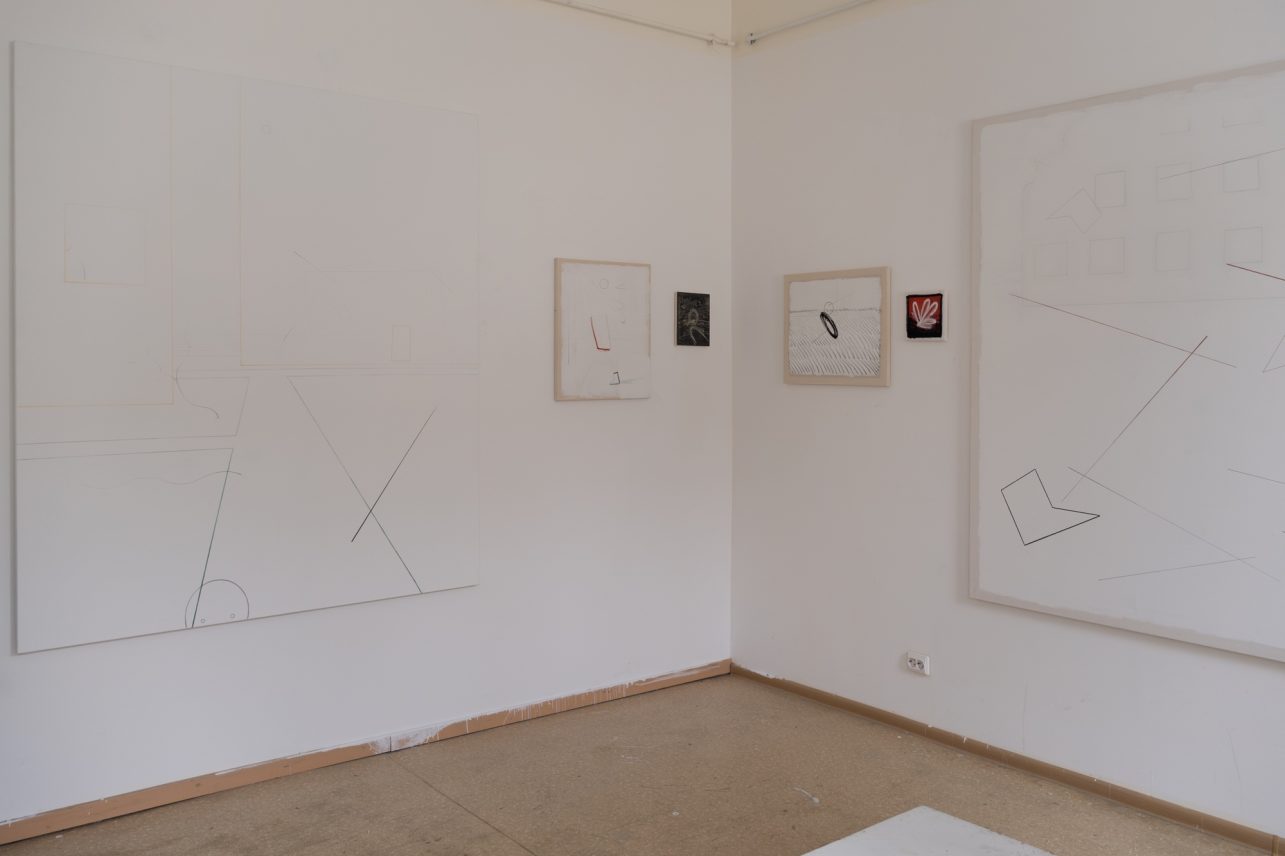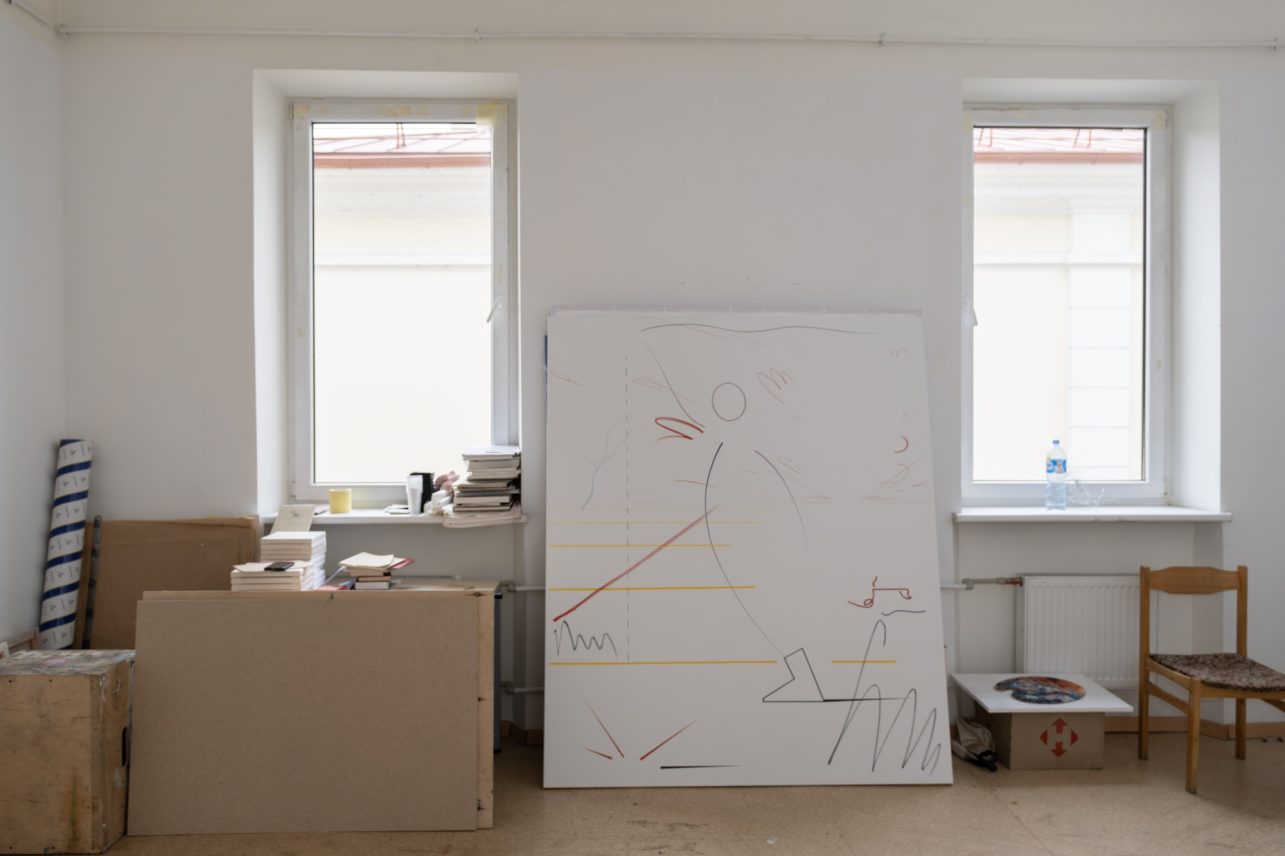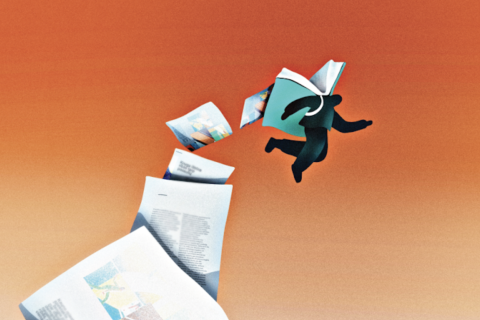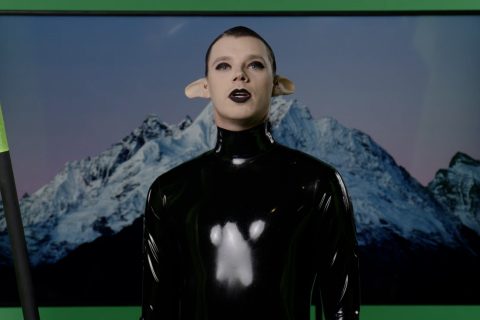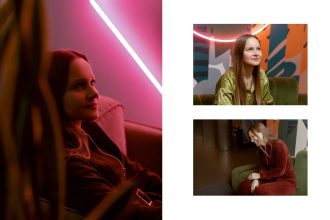For the interview, I chose Kavalierius cafe in Naujamiestis, humming and buzzing with conversation. The space perfectly resonated with the intense life phase of the painter Lukas Marciulevičius. This year you will be able to see his works in Šiauliai, Vilnius, and, of course, Kaunas. Lukas will present several solo exhibitions and will also participate in group exhibitions. They are the reason why I wanted to interview him for the Debuts issue. The artist is not a debutant, he launched his career in 2019 with a solo exhibition Įvykiai, daiktai ir vietos (events, things and places). However, during the interview, he said that due to the scale of the exhibitions and the abundance of works, it actually feels as if 2024 is the debut year.
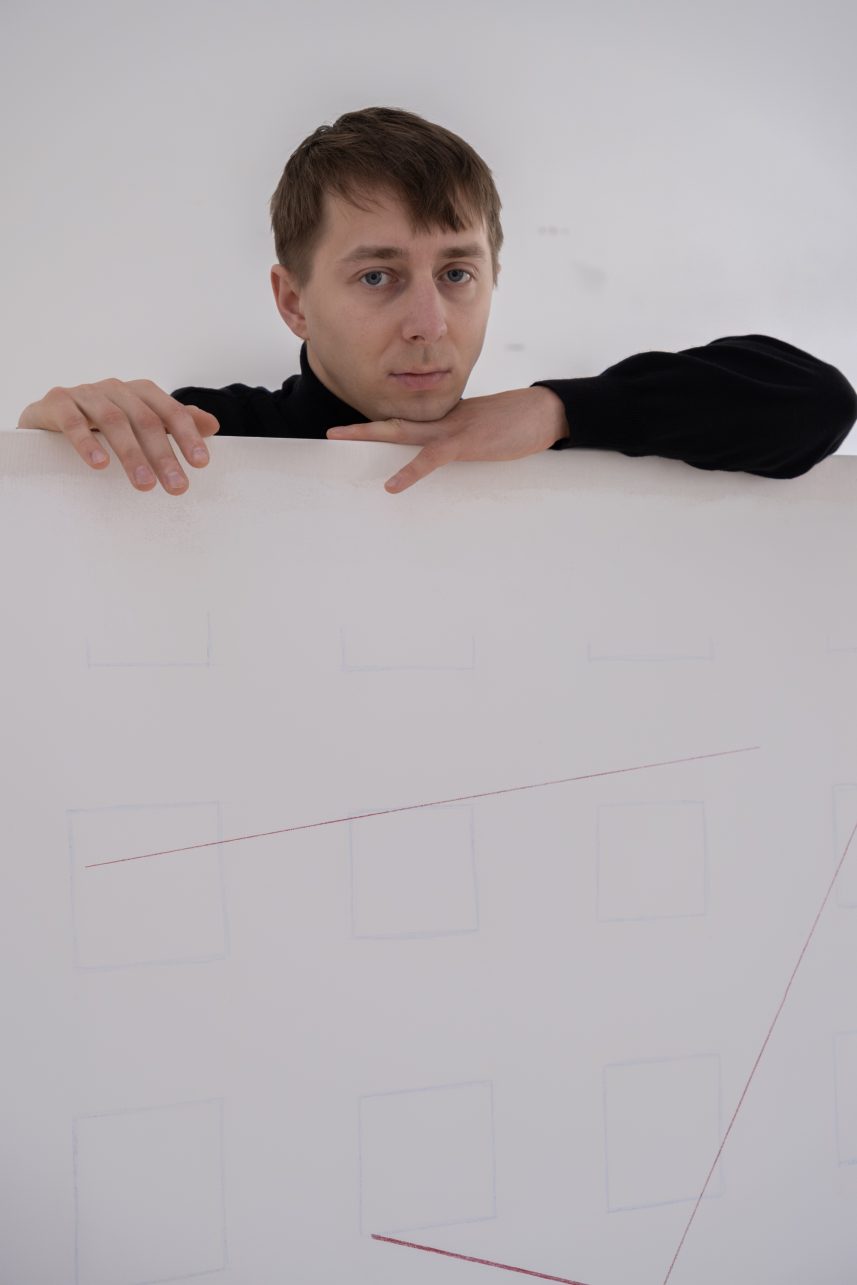
Lukas, you completed your undergraduate degree in 2019. Later, you decided to continue with the master’s degree at the same Kaunas Faculty of the Vilnius Academy of Arts, where you obtained that bachelor’s degree in painting. Why did you decide to return to the academic environment after a several-year break?
I took a break to see if I could still paint without an academic environment. Many people stop painting after completing their studies, they do other things. This often happens because of a lack of rhythm, schedule, or inner discipline. I did not abandon painting. I finished my bachelor’s during the pandemic, so there weren’t many places to show my work. Eventually, I started cooperating with THE ROOM Gallery (I simply received a message from them, saying that they were interested in my work). We created the agenda and the exhibition plan for the year. I didn’t want to begin graduate studies out of inertia, and my painting has also changed a little over a few years.
Painting, as you mentioned, is the main and irreplaceable form of expression for you. What did you discover in this area that you find important?
Although I have been drawing since childhood, I did not associate my future with it. It was hindered by the environment. Of course, in the end, I had to choose where to put myself and my time; I decided to do what I do best, and I chose visual art. Painting for me is a source of stress and relaxation, fear, and joy. Today, I look at it as a game with no rules. When I create in my studio, I can ignore anything outside of it. Anything imaginable can happen in a painting, and you alone are responsible for it. So, on the one hand, creativity provides a sense of control that you may lack in everyday life. A sense of control can lead to a sense of satisfaction or happiness. On the other hand, since you are in control, you are the only one responsible for what you paint and show. And that breeds stress and fear – a sense of responsibility towards that long-lasting painting tradition, which is important to me.
I would like to know what your days are like. When and where do you paint?
I had a large studio in an abandoned space next to my parents’ house, and after entering the master’s program, I moved to the premises of the academy, because it is easier to do everything in one place. I divided my time so that I devote the first part of the day to the theoretical part of my studies – I read, I write – and then in the afternoon, I go to the academy and paint until the evening. The conditions are perfect for that.
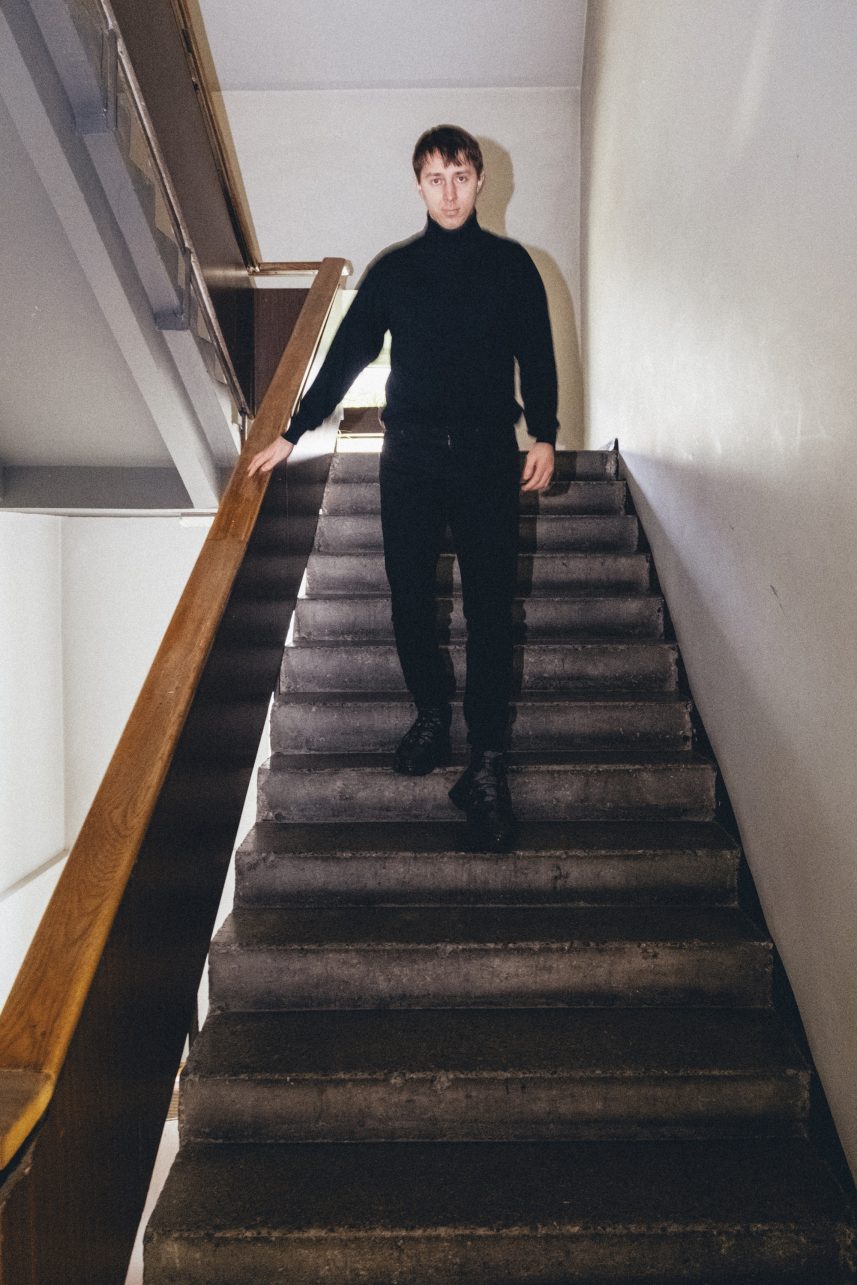
When I saw your work for the first time, I thought about colors. In some of them soft pastel shades play with each other, in others they are outrivaled by white, black, or bright red. How much importance do you attach to colors? How do you choose a pallet for a painting?
Color is very important to me; there are paintings in which there is basically nothing else but color. I usually don’t attribute any meaning – at least symbolic. I first prepare the surface of the canvas by looking for THE color. So sometimes the canvas stays like that for weeks. I cover it in one color, then in another, until I finally hit the spot, and get the color I wanted, which fits the mood of the painting. This year I painted several paintings in pastel colors, but now I’m moving more and more towards more natural colors. This is one of the changes I mentioned at the beginning, I also use a different way of painting. In my paintings, the forms used to be synthesized, I used the same style, but now I experiment more.
What prompted these changes?
I always feel – and I would say with each painting – the desire to change and discover different ways of painting. From my bachelor’s to my master’s studies, I was searching for technical and technological solutions, but I did not touch the visual, and aesthetic side. Now I’m starting to feel like it’s time for a change, but the style hasn’t changed drastically. I just want to show different things.
The academy has a lot of influence on the change. We have long discussions with the professors; we analyze the works, and they give a lot of good advice. In addition, I allow myself to experiment more in my studies, I work more intensively, and I can devote all my time to painting. Studies are for searching, experimenting, and discovering.
Maybe you have experimented with other media as well
I work with animation and video art. I use the same principles there as in painting. I present animation as a moving picture, projecting it onto canvases. In painting, I use line, color, and composition to create a certain world, the same goes for animation. Only here it is easier to involve the viewer because it also contains sound and movement. Animation is closely related to painting and, as I see it, extends what I do on canvases. I have also created several installations. Anyway, I’m interested in everything that comes out of painting, or is based on it.
Your work is often described by several keywords: abstract, minimalist, full of contrasts, active colors, and space for the gaze to wander and create stories. The paintings are often objectless, although a certain inspiration comes precisely from them. While observing the world, you said you realized that a person moves from object to object, from one place to another. It can seem like a rather sad human existence and at the same time a positive one, when we view a person as constantly moving and searching for meaning. And what is really important to you? What do you want to convey and highlight with your paintings?
A difficult question. I wouldn’t say that I try to give sense to something in my painting. I just try to involve the viewer in the world I create. I look at painting as a game where there are no rules, anything is possible here. The viewer of the painting engages in a game I am creating, the goal of which is to solve the riddle of the painting. What is this riddle, this world in the making about? I don’t have the answer. I have tried to define my work, but the next day another definition is born. I am always looking for new ways to paint a picture that would surprise me, that would be new to me. It is a complicated, tiring process, but change, and renewal in creative work are important to me. I don’t want to repaint the same thing over and over again, and that’s what happens in painting sometimes. I’m going to paint today too, and I don’t know if anything will come out of it. Often nothing comes out. Painting is a kind of game on the edge, it is either all or nothing.
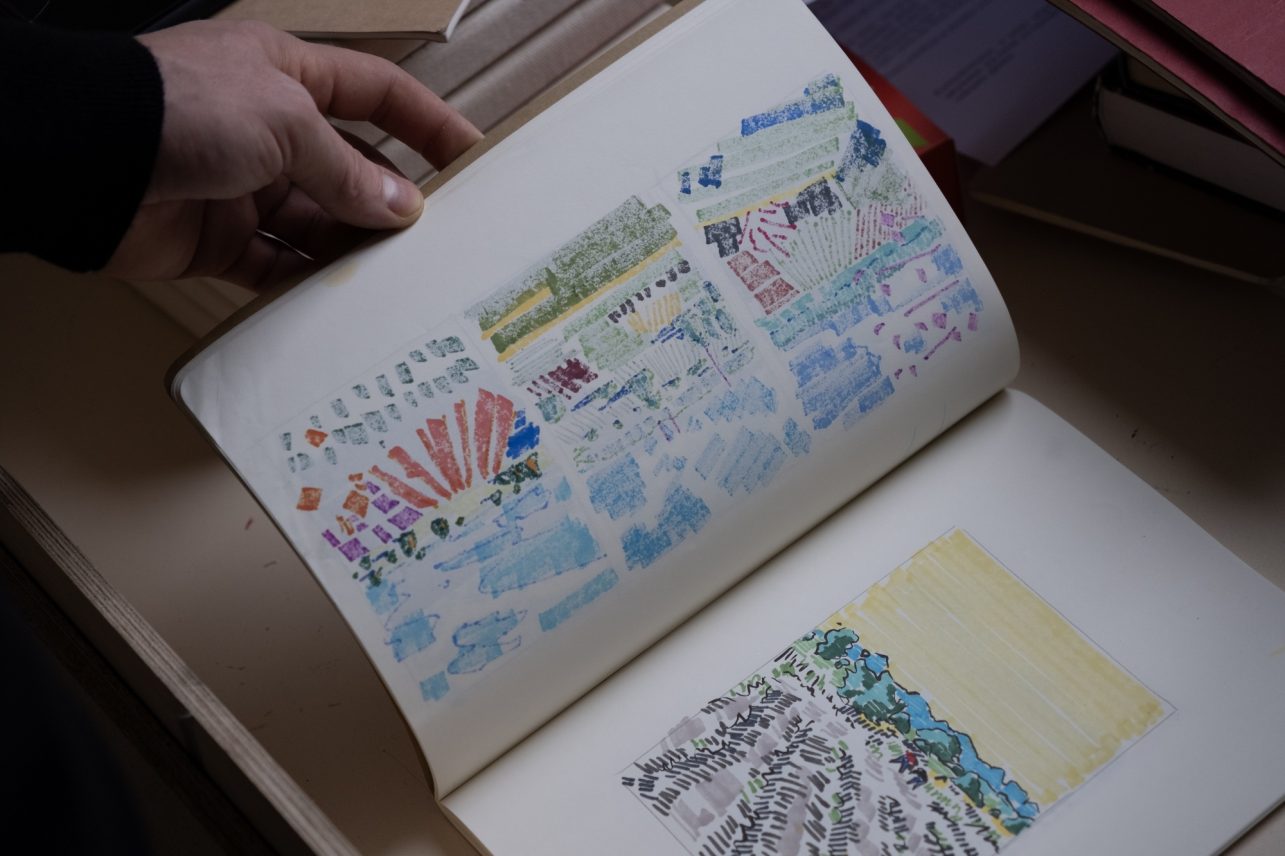
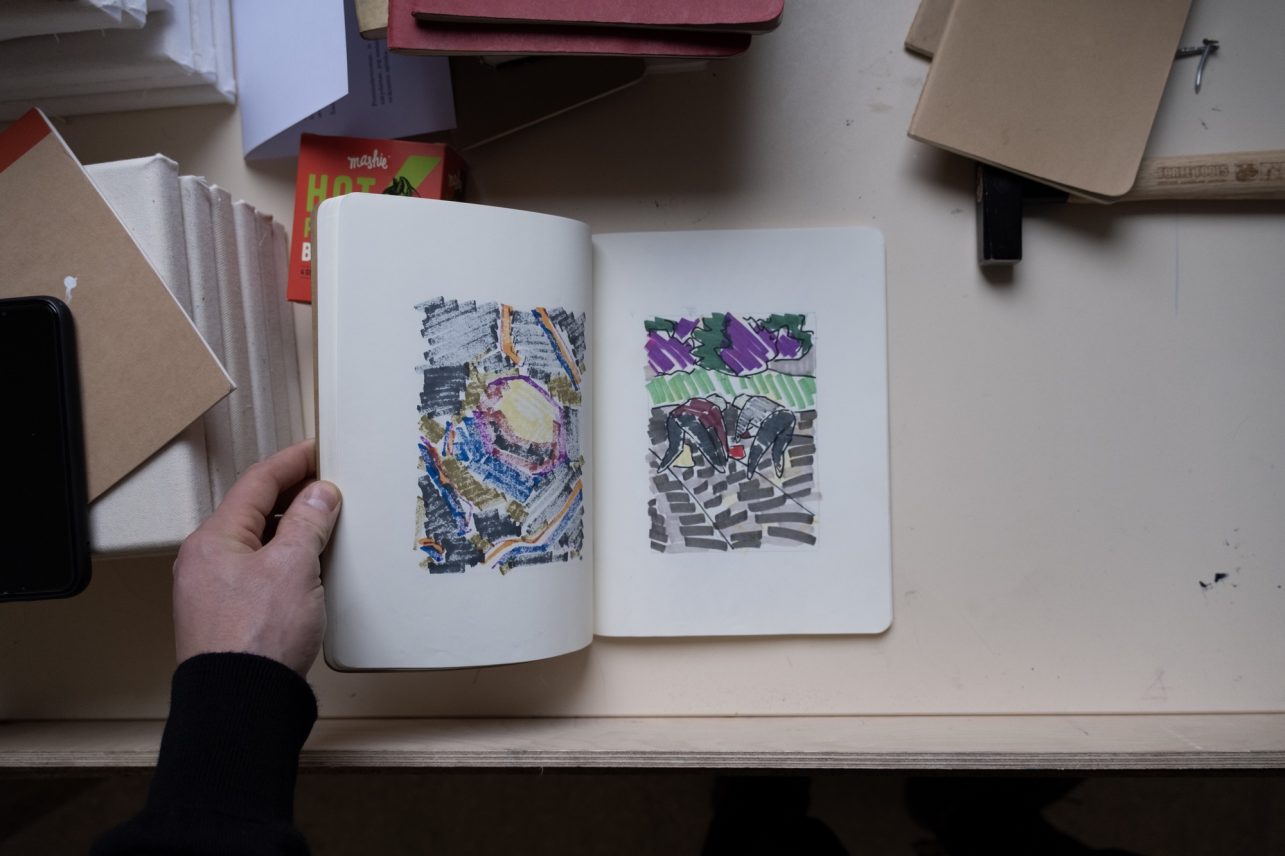
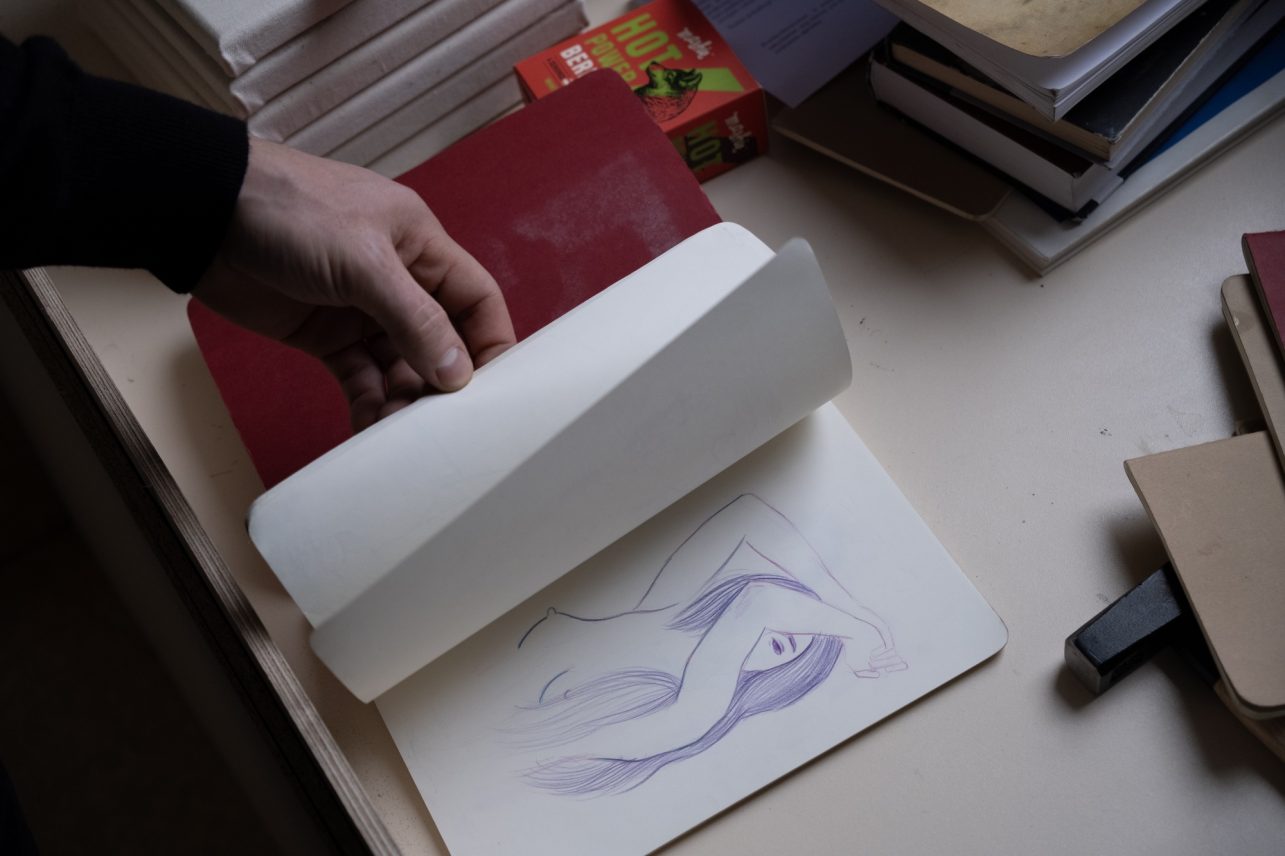
There will be an exhibition in the Drobė factory this year. Could you tell me more about it?
Its opening is scheduled for September 27, so a lot of things still only exist only in theory. I haven’t made a plan for what exactly I will exhibit. In February, I will hold a solo exhibition at Šiauliai Art Gallery. It will be an interactive exhibition where I will present not only paintings but also video art and animation. Perhaps I will continue with this exhibition in Drobė. Although, Drobė factory has a very big space, which poses certain challenges. In addition, there is still half a year left until the end of my studies and it is unclear what changes in my painting style it will bring.
The defense will probably take place in the Meno Parkas Gallery and, as far as I know, the exhibition is scheduled to be on display for a week or two. In addition to these, we are also planning an exhibition in Vilnius together with THE ROOM. And ArtVilnius also awaits.
The coming year feels like a debut year for me compared to what I have done so far. I will have the first serious exhibitions in large spaces, there will be a curator, larger formats, and more diverse media.
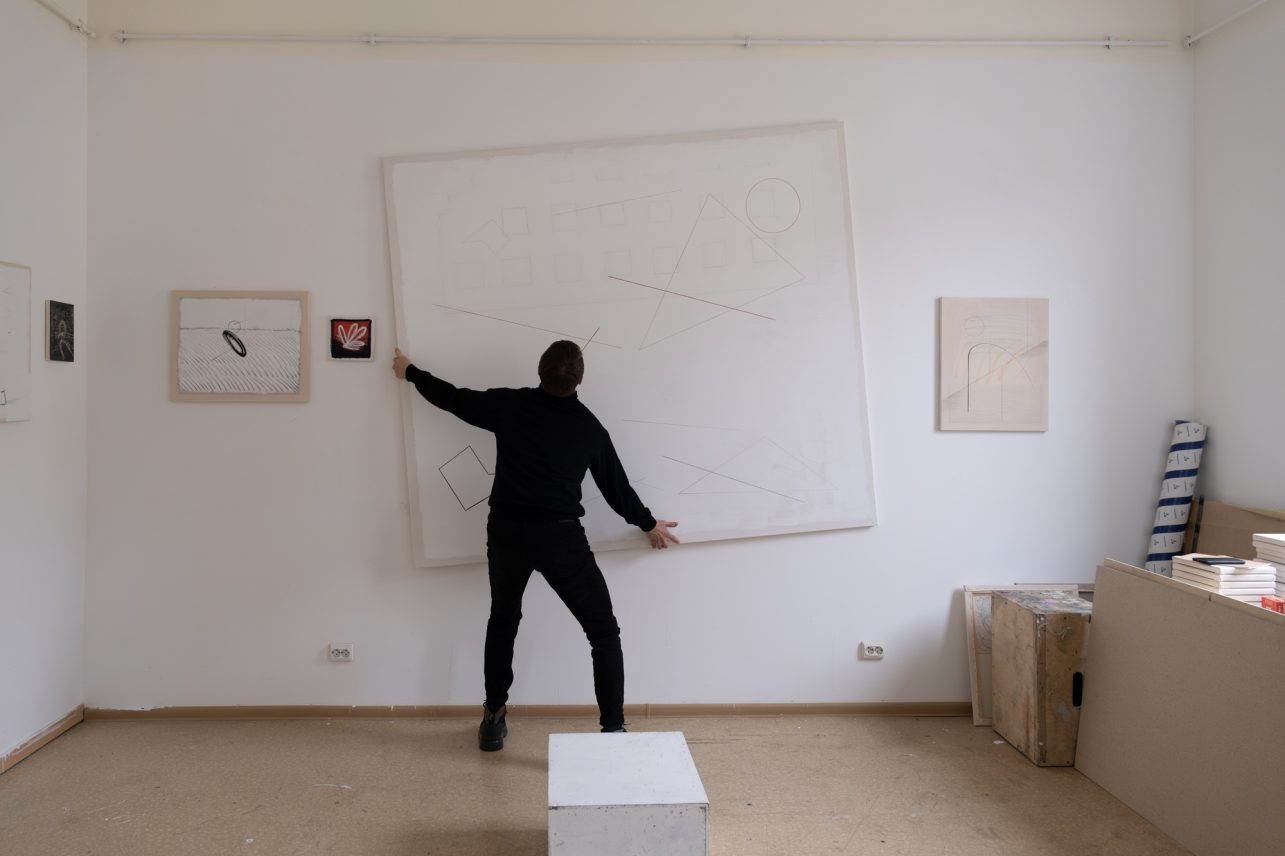
You mentioned group exhibitions, so I want to ask about one more of your activities. Together with painters Eglė Marcinkevičiūtė, Ligija Žilinskienė, and Lilija Gotautaitė-Smalinskė, you formed a group Kažką darom.
We are course mates. I lean towards painting, Ligija towards installation, Lilija works with textile art, and Eglė creates objects. We are all different, but we are all interested in landscape. We got together at the academy when we had an assignment to write a fictitious cultural project. After we started writing, we realized that we had a lot of common ideas, so we filled out a real application, started looking for partners, and sponsors, and eventually started to function as a group. Our exhibition planned for autumn will be our debut, and the works we will show will be created in Šilavoto davatkynas during residency. It is curated by artist Petras Lincevičius. The exhibition will be diverse, we will make performances, interactive installations, and animations.
You have mentioned that “the act of painting is an act of withdrawal from the world”, and indeed being an artist seems individualistic. How do you manage to create in a team setting?
We will create performances and interactive works in the group; however, the essential works will be created on an individual basis. We will reveal four points of view, what the landscape means in creativity today, and what is interesting and important to us. I was and am inclined to cooperate, collective activities are interesting to me. In the future, I would like to take on more complex projects with animation, and video, and involve more people.
What advice would you have for creators, not necessarily painters, starting on their creative journey?
Take advantage of any opportunity that comes your way. My first exhibition right after graduating from the academy was at the Godo bar. I participated in a competition to organize an exhibition at the Academy’s gallery and at first, I did not make it, but later I was invited. Then, Vartai Gallery contacted me and invited me to join a group exhibition.
The snowball effect
Yes, it is frightening to organize the first exhibitions and show yourself, but you have to overcome that fear. I would have said that you should not be afraid to change, but this path is not suitable for everyone. I’ve probably always had confidence in myself, and it paid off, so another piece of advice would be to not underestimate yourself. No one knows what painting will look like tomorrow. Sometimes I think about the artist’s career in Lithuania. In one TV show, they said that artists in the US often have careers that last from two to six months; they manage to hold interest for a very short time. The status of a young artist has many advantages: we work in an environment that constantly needs something new and provocative. I notice that exhibitions of young people are visited, and works are bought.
I think that we have a lot of opportunities, especially compared to the previous generation, for example, my teachers, some of whom did not even have a place to exhibit their work after graduating from the academy. Nowadays, it is certainly possible to reach a wider audience much faster, but the challenges are completely different. Because of that abundance, it might be difficult to surprise people when everything has already been shown. Each generation may reformulate this idea. I guess there was similar thinking before Impressionism too. Sometimes, of course, I catch myself wondering if I will be able to paint anything else.
